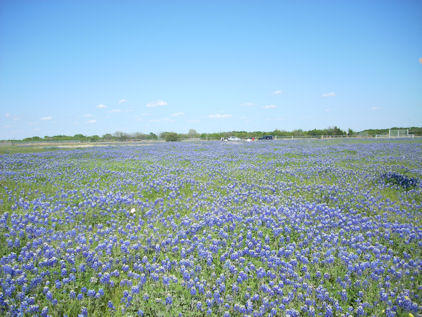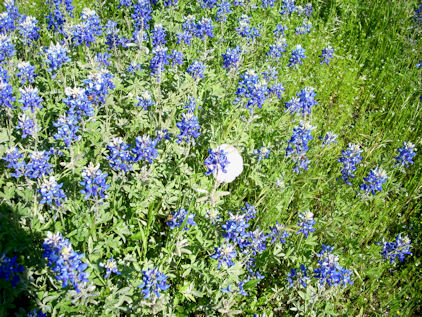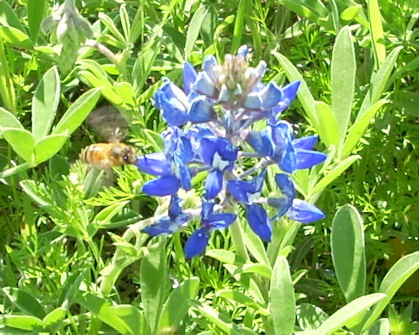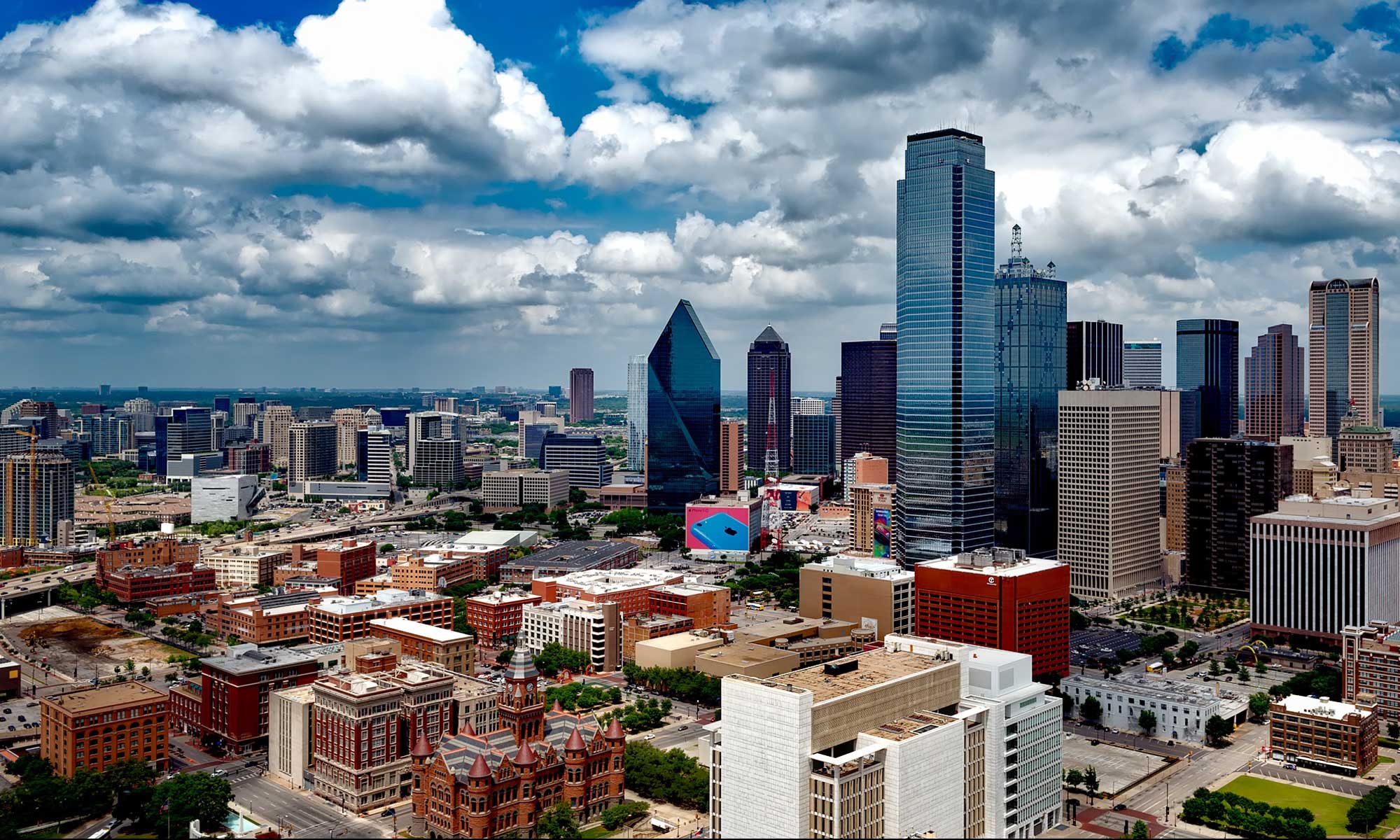Today, folks, I’m going to talk to you about the bluebonnet. And no, I don’t mean the famous brand of margarine, though I admit, I’m a little partial to it — it does taste better than most brands of not-butter. Nay, the bluebonnet I prefer to wax lyrical about is not <> a tub of processed animal fat, but rather the state flower of Texas. While bluebonnets grow here and there all over the state, they’re especially common in Central Texas, of which my neck of the woods is considered the far northern part.
The term “bluebonnet” actually refers to several species of lupines that the first American settlers of the state found growing wild all over their colonies, which were clustered in the vicinity of what would become Central Texas, between Austin and San Antonio. Lupinus texensis was the original official Texas bluebonnet, but the state legislature has since widened the definition to include L. subcarnosus (Iowa’s state flower, also known as Buffalo clover), L. concinnus, L. plattensis, and L. havardii. There’s another bluebonnet relative called the Lupinus argenteus, which I had to mention because of the similarity of the species name to my own surname (Largent), but it’s properly called a “bluebonnet lupine.” Well, whatever.
Bluebonnets are short flowers, about a foot high, with fleshy oblong leaves and a sturdy stalk. As the name suggests, they’re mostly blue in the wild, though pink and white individuals can occasionally be seen. Supposedly it’s illegal to pick bluebonnets, since they’re the state flower (just like it’s supposed to be illegal to kill the state bird, the mockingbird), but that’s actually just an urban legend. You can pick all the bluebonnets you like. During the early months of spring, and especially from about mid-March to late April, they carpet their fields with a lovely sky blue, with white accents; very much like this view, which was taken next to a church about two miles from my house.

I suspect the church fathers deliberately planted the field with bluebonnets, which I consider a true public service, and Amen to that! Here’s what they look up closer and personal:

We have a tradition here of bringing little kids and pets to a bluebonnet field to take pictures, and there were several families doing just that on the day I visited the churchyard. But this practice has become difficult of late, because frankly, a sight like this is something of a rarity nowadays. There was a time, twenty to thirty years ago, when it seemed that the roadsides and highway medians anywhere from Oklahoma to south of San Antonio were cloaked in a solid, shimmering carpet of blue, mixed with a scattering of orange-red Indian Paintbrushes, which looked so much like bluebonnets (though they’re not related) that we called them “redbonnets” when I was a kid. Of course, I realized that much of my recollection is probably just fallible memory; surely bluebonnets weren’t so ubiquitous back then, not in real life. But I do know for a fact that there used to be more of them in Central and East Texas.
Maybe it has something to do with the fact that for a while there, the Texas Department of Highways had a tendency to mow them down before they went to seed, and so naturally, their numbers decreased over the years. Hell, the reason they were so common along the highways in the first place was because of the influence of Ladybird Johnson, LBJ’s wife. She was from East Texas and loved wildflowers, and for years the state sowed wildflower seeds along the highways and, yes, the byways of the state. After her influence faded, so too did the bluebonnets. And I haven’t seen a redbonnet in years, which saddens me. These days, you’re more likely to see the kind of volunteer flowers that pop up anywhere hanging out with bluebonnets, like this buttercup for example:

If you come down to the DFW in the spring, be sure to find a bluebonnet field like this one. If you enjoy natural beauty (and who doesn’t?), I guarantee you it’s worth the effort — they’re just plain lovely. This particular field is in Garland, on Miller Road on the last hill before you slope down to Lake Ray Hubbard. But let me warn you to be careful when you step out into the bluebonnet field: honeybees like them even more than we do. You’ll need to take care if you’re allergic to bee stings, because you’re likely to find any bluebonnet field abuzz with busy little insects, zooming from one little blossom to another. Kind of like this one.

I kinda like this photo. It’s not the best ever, but I feel I was fortunate to capture a bee in the act. I like the way his wings are just a little blur. Pretty good for a digital camera, I think.
If you want to see our Texas bluebonnets this year, visit soon — they’ll probably be gone by the first week of May. Otherwise, expect to see them any other year from early March to mid April, and not much longer; we’ve been fortunate to have a cooler than average spring this year. Remember how I told you that March usually lasts until mid-April here, based on the blustery winds? We’ve got it in spades this year.
